This is the best portable espresso maker - in fact, it's the only one worth buying
I've tested the best portable espresso makers on the market and you only need to know about one


I tested over forty different coffee makers before settling on just one for the position of best portable espresso maker. If you look online, you'll be overwhelmed with what's on offer. There's plenty of options ranging from the cheap and the colorful, to the complex and the compact, but only a few will make you seriously good coffee on the go.
Sure, one of the best moka pots, a single-serve pour-over, or an Aeropress can brew you coffee in a relatively compact vessel, but they won't deliver the delicious flavors that the best espresso machines can. To reach those lofty, coffee heights you need pressure (not infusion), concentration (the water to coffee ratio will be 2:1 rather than the standard 15:1), and thickness. These are all features which characterise the espresso makers category.
After days of testing the best espresso machines as well as the best portable coffee makers, I've found the best. This model is compact enough to carry in a bag. It's as small as a can of soda, but delivers on the flavors that machines twenty times the size can. It's the perfect travel companion, whether you're away on business or leisure.
The coffee maker I'm talking about is the Wacaco Picopresso and it's truly a gift from the coffee gods. Here's everything you need to know about it, as well as just one alternative option if the Picopresso won't quite suit your needs.
The best portable espresso maker
Best portable espresso maker
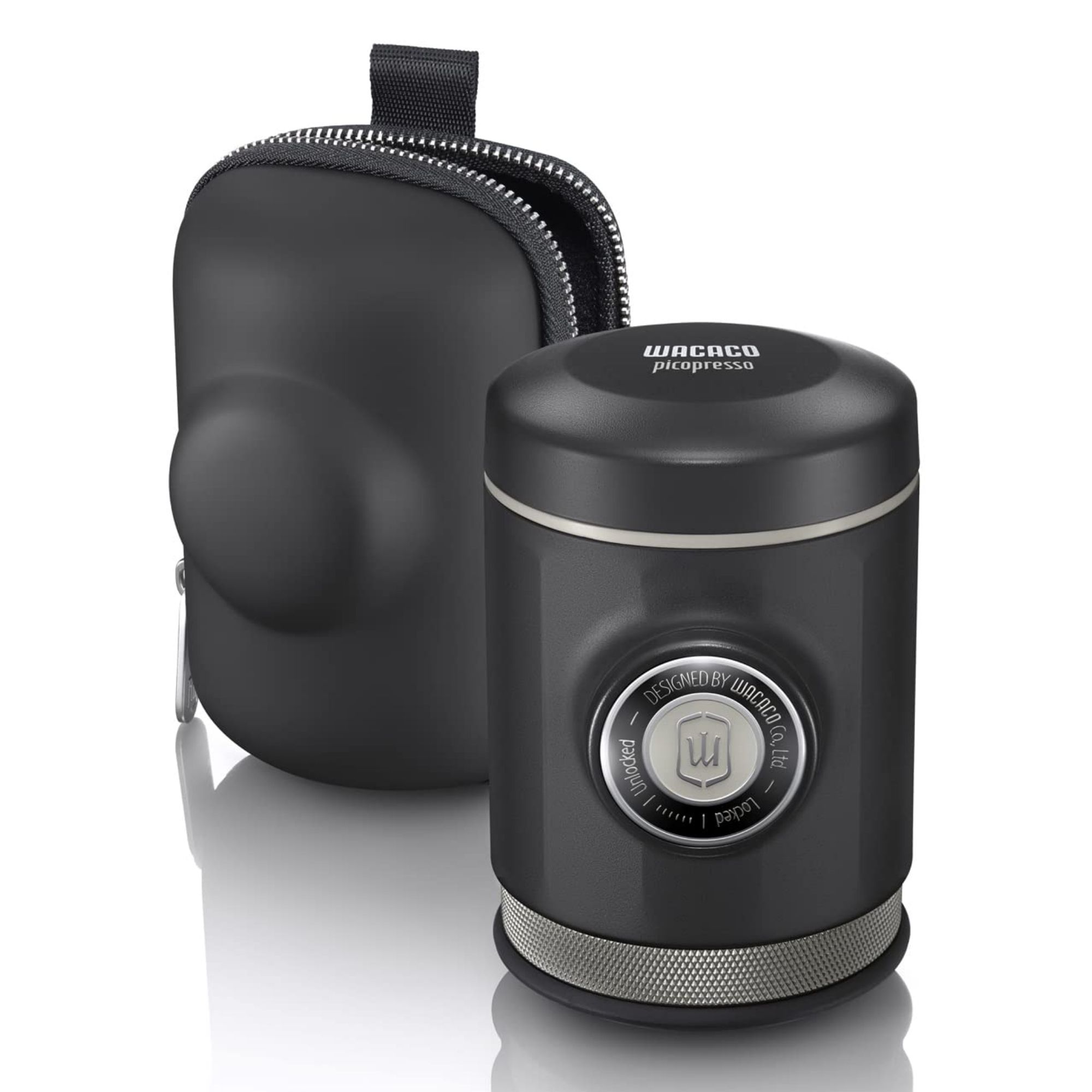
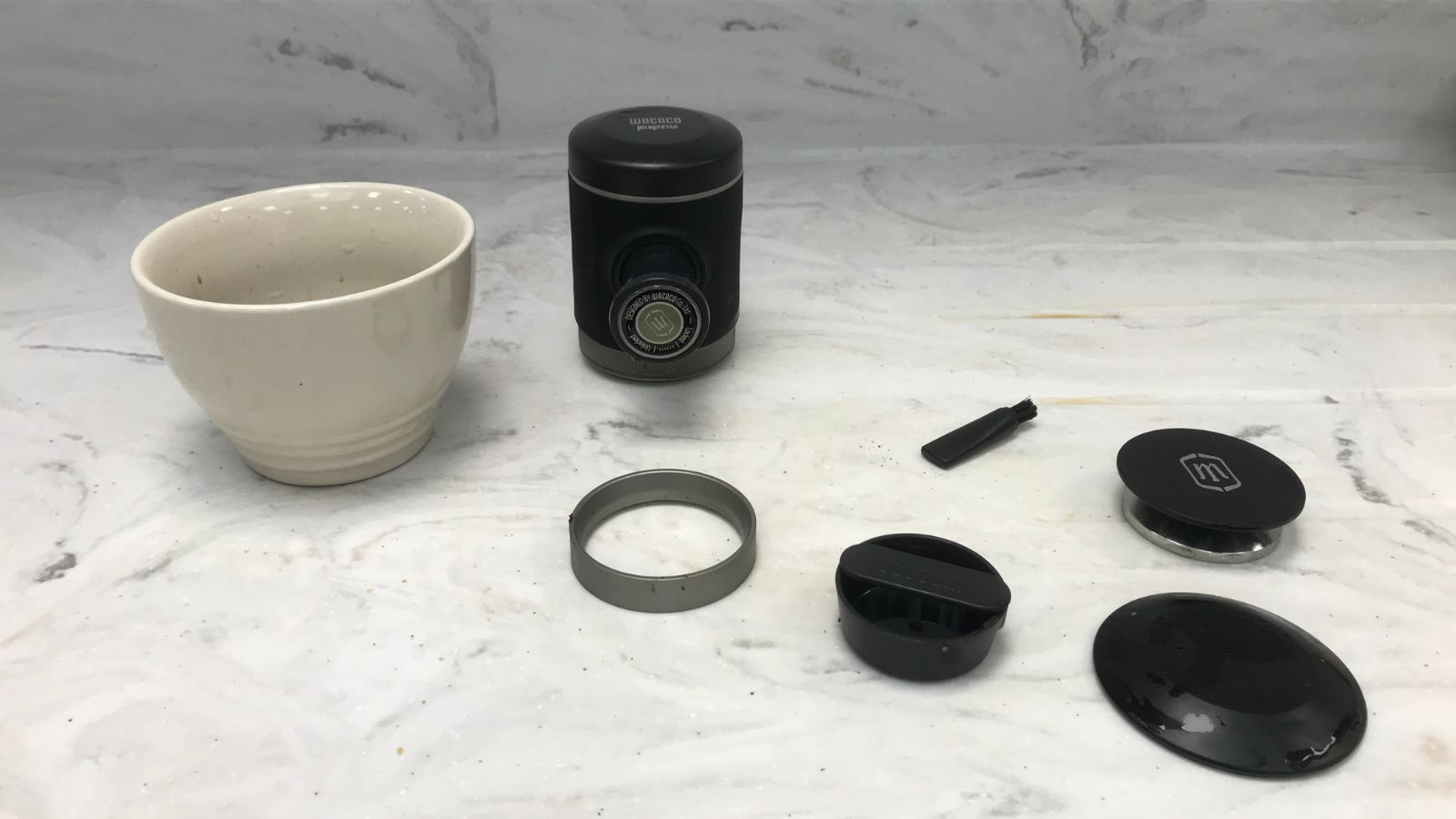
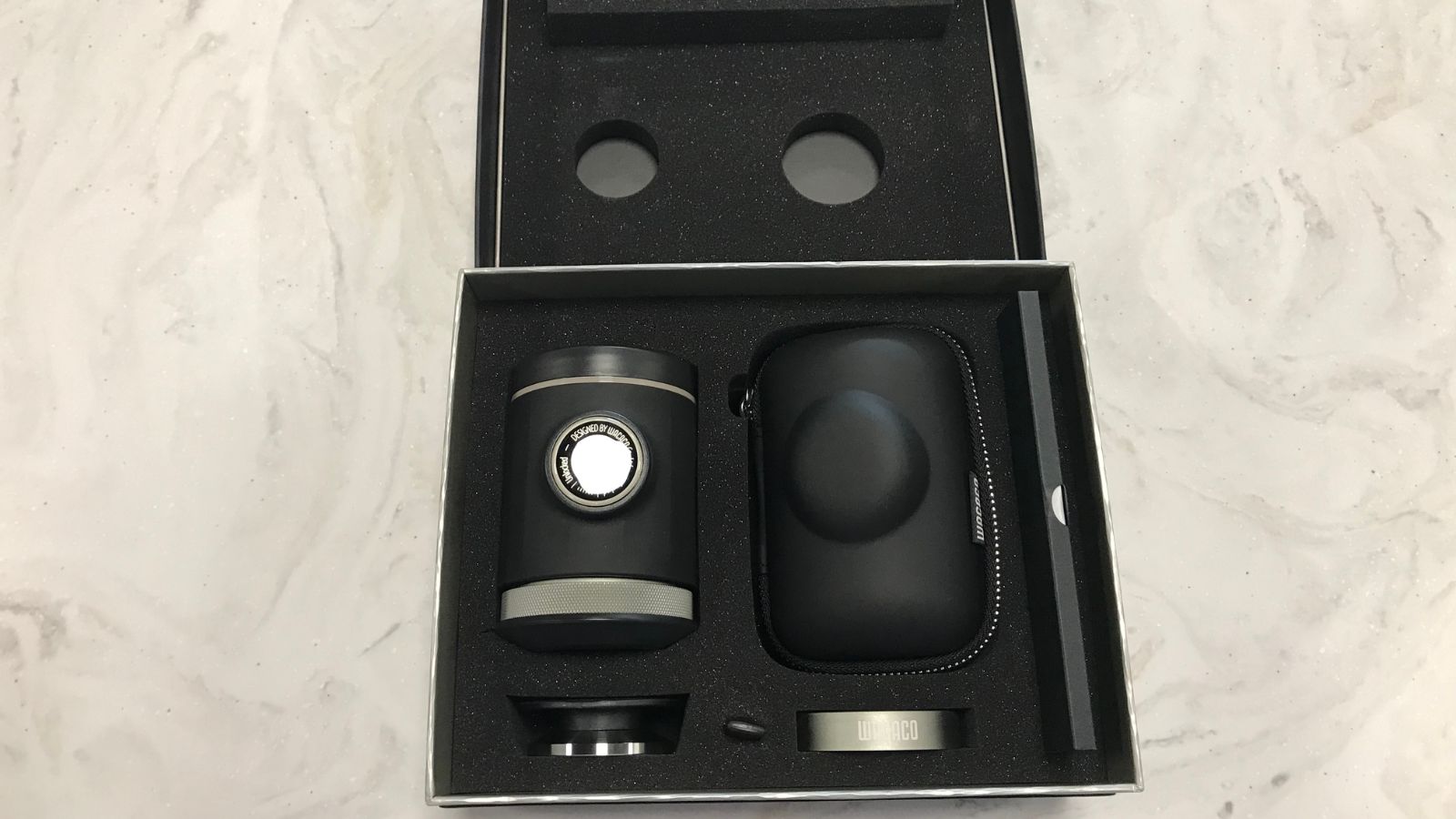
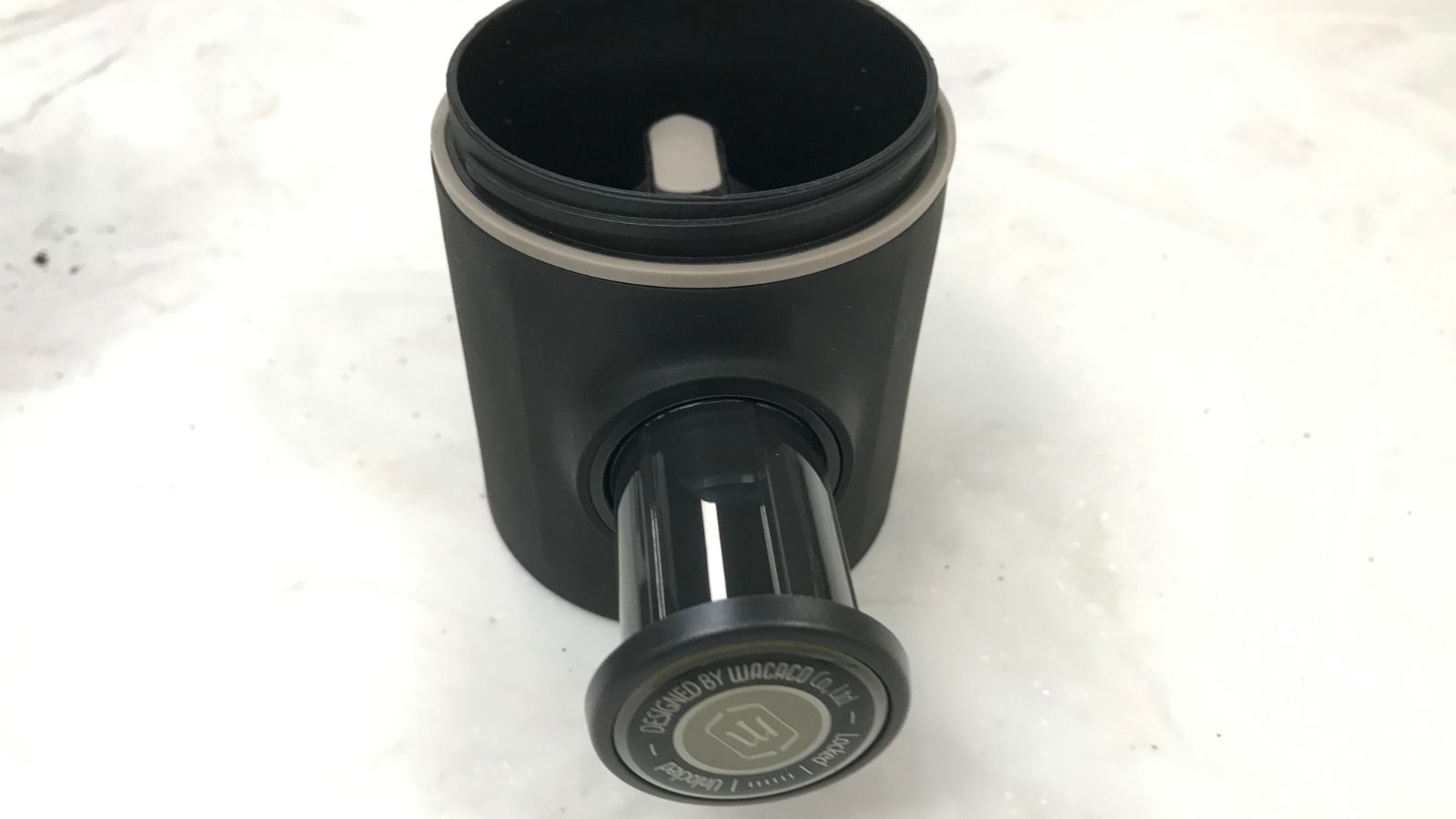
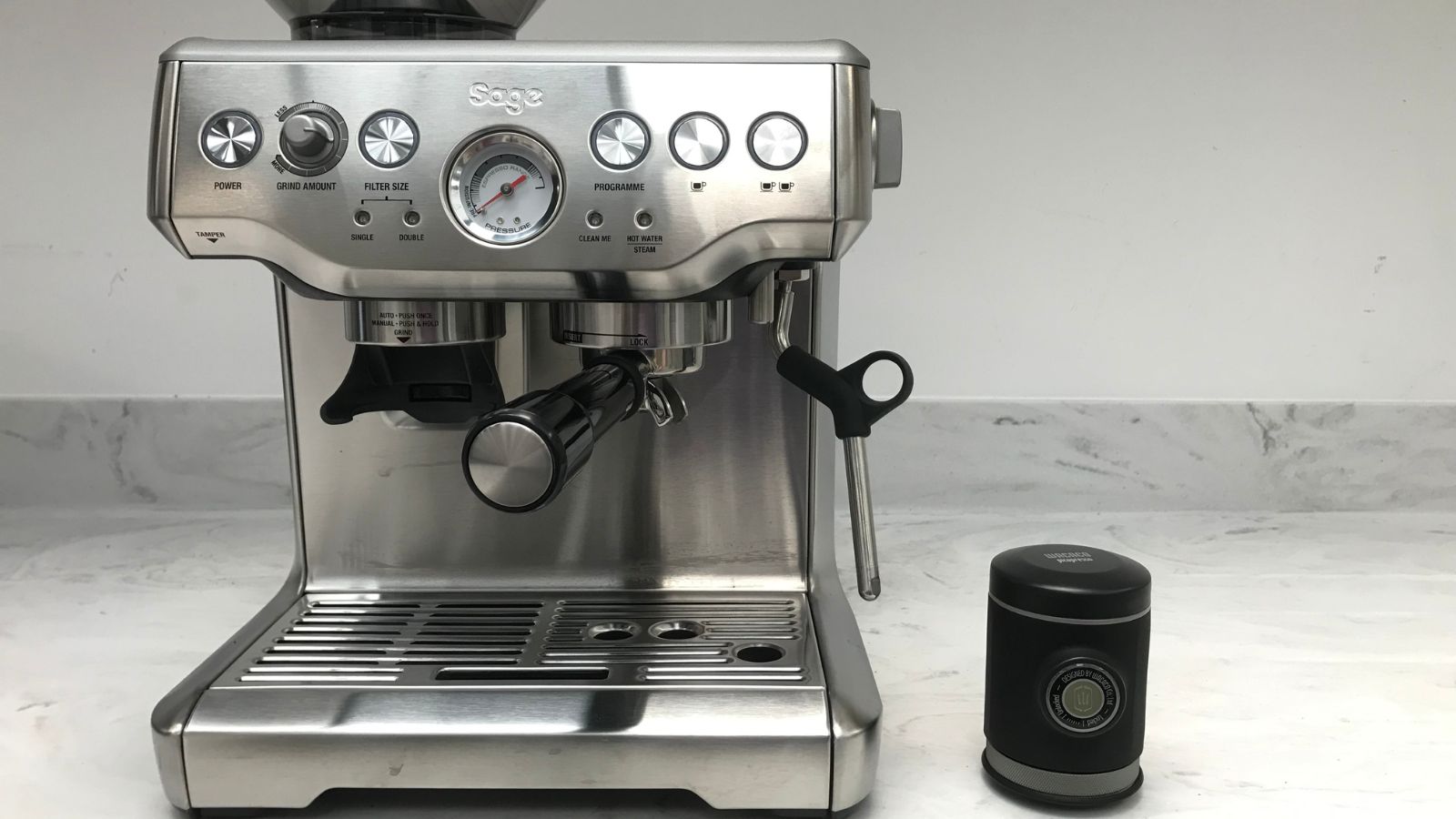
Wacaco Picopresso
This makes top-quality espressos, just on-the-go
Dimensions: 4.17 x 3.07 x 2.8 inches | Weight: 0.77 lbs | Tank capacity: 80 ml | Pressure: 18 bars
✅ You make coffee early in the morning: this hardly makes a sound
✅ You're short on space: this is smaller than a can of soda
✅ You want a premium model: this feels luxurious
❌ You have RSI or arthritis: this needs manual pumping
❌ You judge pressure by feel: this isn't very communicative
❌ You're on a budget: this is a more expensive model than most
🔎 Wacaco Picopresso: I'd put this on any list of travel essentials. It makes delicious coffee and is only as big as a can of soda. It's just not made for those with restricted hand mobility.
It's nearly been a year since I tested the Wacaco Picopresso and nobody has managed to knock it off the top spot as the best portable espresso machine (and coffee maker) on the market. No other brands are balancing style and substance as effectively as Wacaco.
At just over $100, the Picopresso is more expensive than most Flair and Nomad portable coffee makers, but you get what you pay for. The matte satin finish and hard-shell case make this every part the premium coffee maker. Even unboxing it was a treat. Whilst the individual parts (a dosing ring, tamper, brush, needle tool, and basket) feel premium and durable, they don't make it too heavy overall or inconvenient to carry around.
There are also some lovely accessories, such as the Picopresso stand which can help you to complete your portable coffee collection. The construction quality of both the Picopresso and its accessories is excellent and, I can promise you, that's reflected in the coffee flavors.
Before you get brewing, I'd recommend investing in a portable coffee grinder. The 1Zpresso is currently sitting in the second spot in our buying guide for best coffee grinders and it's compact and cord-free. Once you've got freshly ground coffee beans (opt for a fine grind setting) you'll be able to make espresso shots to rival your favorite barista's.
The whole process is easy, quiet, and you don't even need a table to use it. My top tip would be that this needs preheating with some hot water (make sure the basket is empty). This will help both the temperature of your espresso and the flavor-extraction. If the metal is already warm, you'll reap the rewards.
The only feature you need to know about is the pump. The Picopresso requires you to manually create pressure by pushing a button in and out. If you suffer from RSI, arthritis, or any other wrist mobility issues, this won't suit you very well. Likewise, if you depend on feeling pressure for knowing when to stop pumping, you might find the Picopresso takes some getting used to. You can't exert the same control over pressure that you might have over the Flair espresso makers, for example.
If you want to learn more, I've written a dedicated Wacaco Picopresso review.
An alternative option
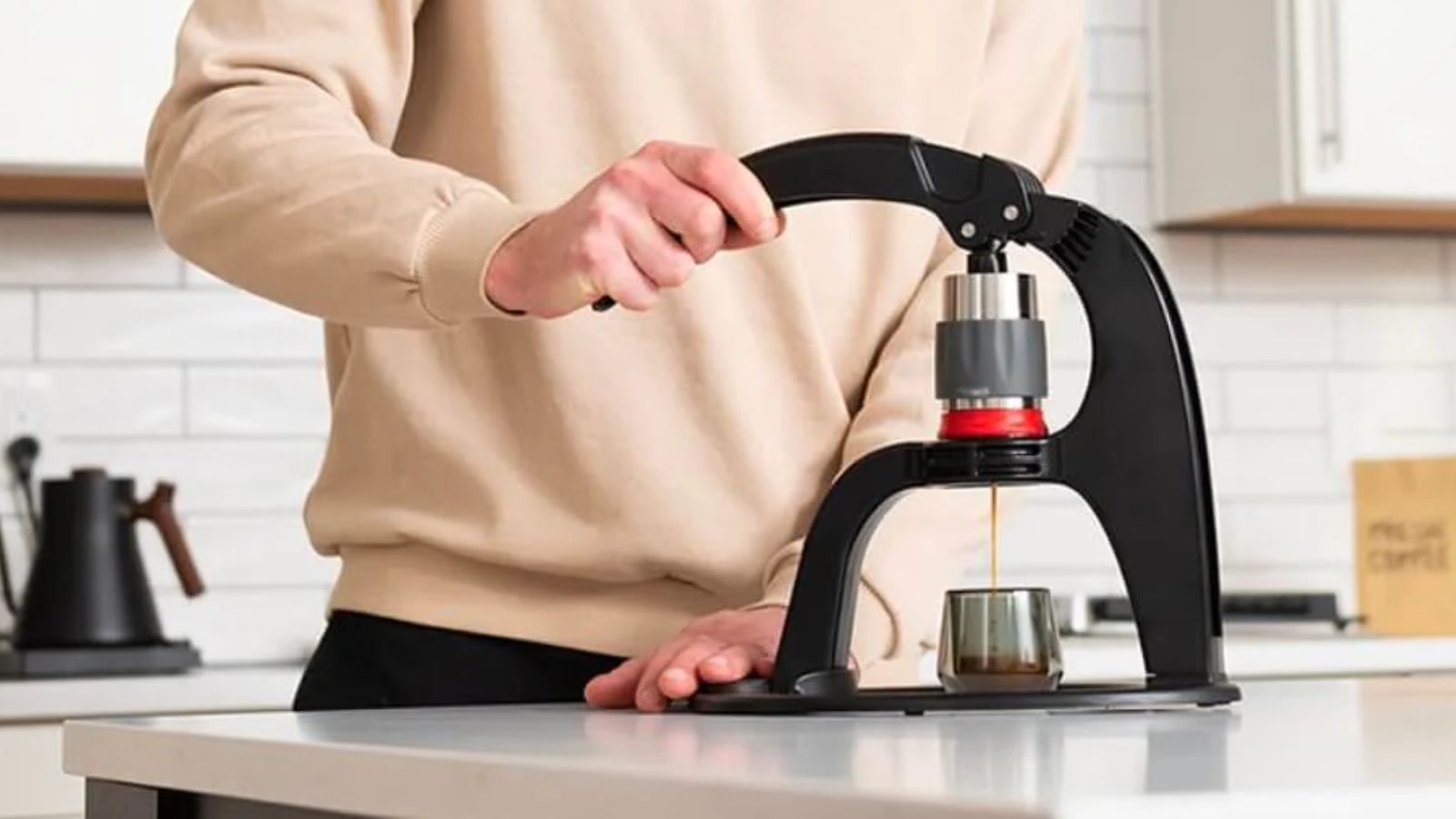
Whilst I'd champion the Picopresso to most people, I understand that it might not suit everyone. if you like to feel pressure in your levers or you're worried about aggravating RSI or your wrist muscles, rest assured, the Flair NEO Flex is a great alternative option.
Flair makes a range of manual espresso machines, but most of these call for niche, specialist grinders, which can make coffee grounds smaller than even the best models on the mainstream market. The NEO Flex is beginner-friendly, compatible with normal, fine grinds. I took it to our test kitchen and made some delicious espressos. Here's all the details.
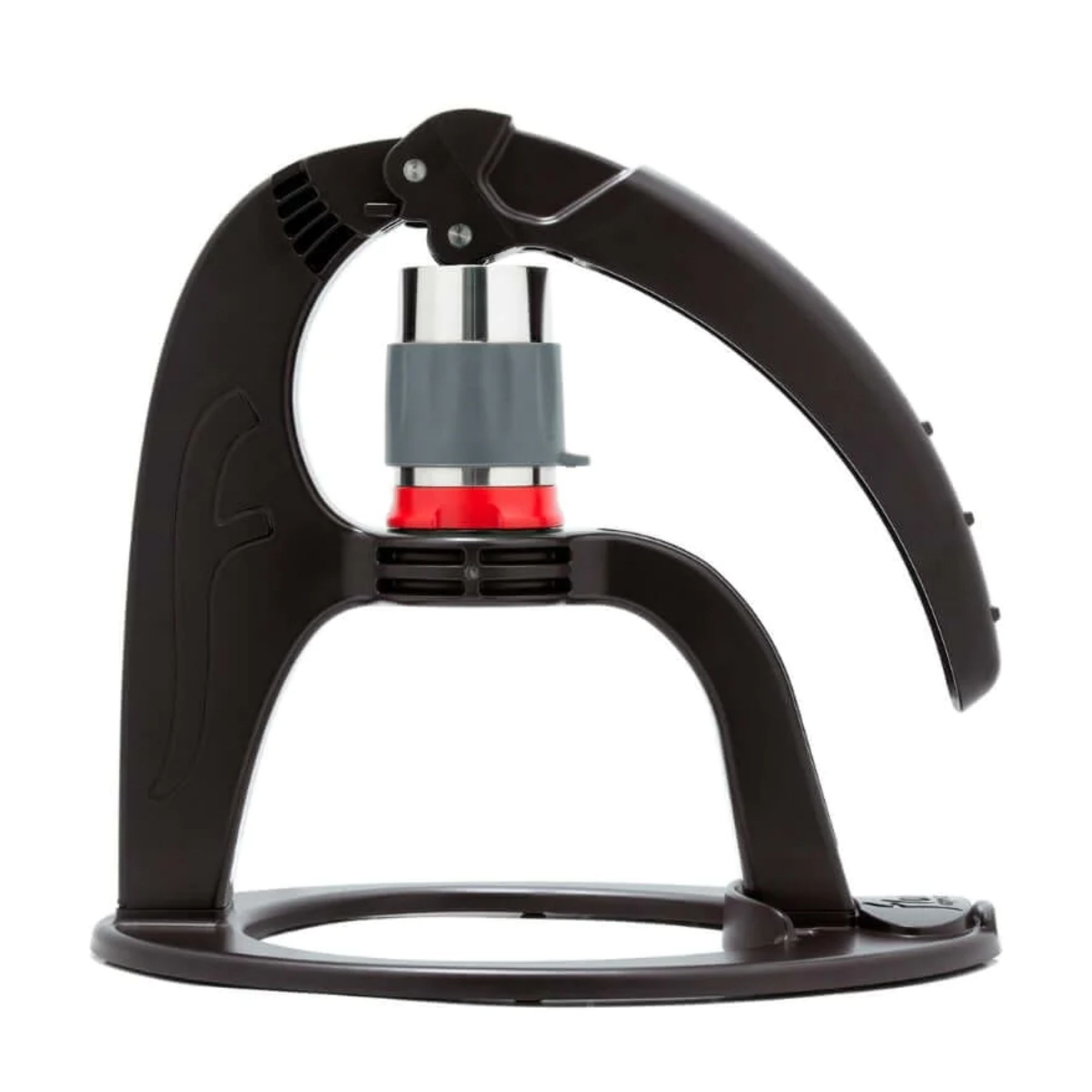


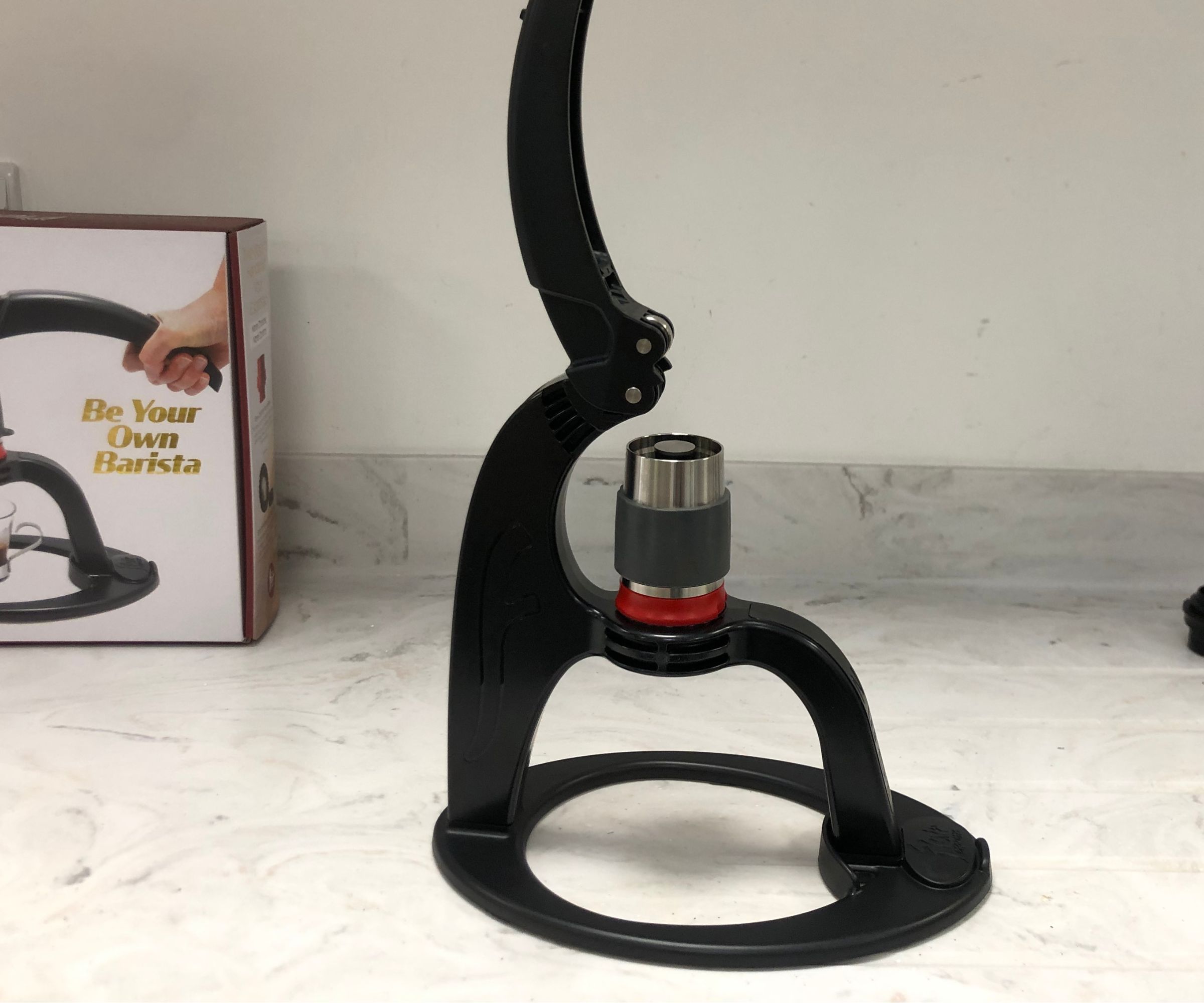
Flair NEO Flex
Large, but still lightweight, this makes great coffee
Type: Manual | Dimensions: 12 x 12 x 4 inches | Weight: 1.51 | Descaling Notification: N/A | Interface: N/A
✅ You want a portable coffee-style nook: you can set this up on a table
✅ You care about style: the slim silhouette is striking and attractive
✅ You're on a budget: this is an inexpensive option
❌ You won't always have a stable surface: this needs to sit on a table
❌ You don't count a suitcase as portable: the large frame makes this hard to fit into smaller bags
❌ You're a coffee novice: this might feel too complicated
🔎 Flair NEO Flex: the Flair's elegant and slim design looks great when it's set up and it will make some delicious espressos, but it's bigger than the Picopresso and less 'handy' in all senses.
The Flair NEO Flex is so different to the Picopresso, almost the only thing they have in common is that they can both make espressos without needing to be plugged into a socket.
The NEO Flex strikes a slim, swooping silhouette on the countertop, with its distinctive looping frame. It's an intriguing-looking piece which is bound to start conversations, but I'm not sure that it's quite to everyone's tastes.
Setting it up and using it is simple. It has a base, frame, lever, and brew chamber which all slot neatly into place. You need a stable surface for this to work on, which some people say discounts it from the 'portable' category, but I beg to differ. It's lighter than most other portable coffee makers, comes with a travel case, and could easily fit into a suitcase, even though it's larger and more bulky than some other portable espresso machines. I won't deny that it's more space-demanding than most, but it's no different to carrying a laptop.
Even though this is crafted from plastic and by far the cheapest espresso maker I've tested, it feels well-built and durable. To use it, you will need some fresh coffee, finely ground (the same as the Picopresso) and then you'll need to follow all the normal actions for making your espresso: tamping, tightening, pressurizing, and extracting.
Flavor-wise the NEO Flex is flawless. It carries true craft flavors expertly and extracts even the most nuanced notes from beans. I tested this with some slightly botanical coffee grounds and the flavors were pronounced and intense. I'll give credit to the NEO Flex for some of it and credit to freshly ground beans for another part. I can't overstress how important it is to use a good grinder.
Overall, this is bigger than the Picopresso, so technically less portable. However, if you suffer from mobility issues or you're shopping on a budget, this is a good option.
If you want to learn more, I've written a dedicated Flair NEO Flex review.
Head-to-head

This is by far the more convenient option for taking travelling. Even though both come in proper cases, the Picopresso is both smaller and lighter. It's also easier to use, especially if you're a beginner. Wacaco packs a dosing funnel and tamper into this neat, can-sized espresso machine.
The espressos I made from the Picopresso, whilst not quite as perfect as the NEO Flex's, were still good enough to rival the best espresso machines on the market. Also, whilst some people like the aesthetics of the NEO Flex, the Picopresso is less dominating and has a much more universal appeal. It's an inoffensive style and much easier to gift to a fellow coffee lover.

Even though it's cheaper, in a blind taste test, I think the NEO Flex has the edge. The lever mechanism means that you can be reactive to pressure changes much more than the NEO Flex, ensuring you don't over or under extract your espresso. Whilst you can monitor this to some extent with the Picopresso, it's much less obvious.
The drawback of the NEO Flex is its size. This is almost too big to classify as portable. It's just really light, slim, and cordless, so it can fall into the portable category. The fact that you need to have this on a flat surface, such as a table, only supports the case that this is a little less than portable. It's much harder to use in a properly on-the-go lifestyle. I couldn't imagine taking it camping, for example.
Coffee travel mugs
You'll need a thermal flask or some sort of travel mug to keep water warm when using both of these portable espresso machines. Luckily, I've been there, done that, and collated all the research. These are the best coffee travel mugs on the market. You can pack them with your portable espresso maker wherever you travel to.

Consult any decent buying guide and the Zojirushi will be in at least the top three choices. It's water tight, an incredible insulator, and comes in a range of colors. I just wish it was half the price.
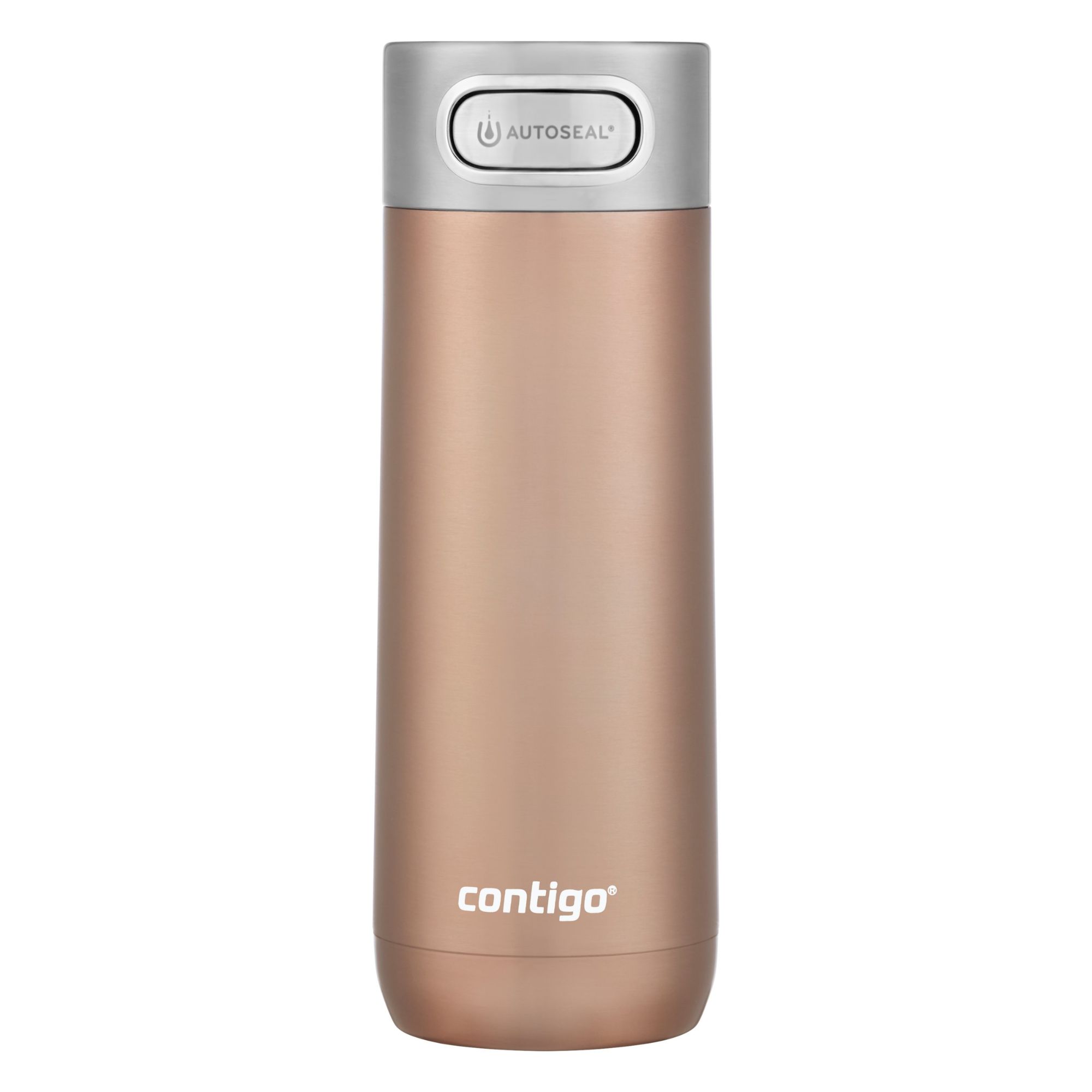
Contigo designed this with everyone in mind. You can open, close, and lock this with just one hand, but it's impossible to make this leak. Experts and customers alike give this rave reviews.
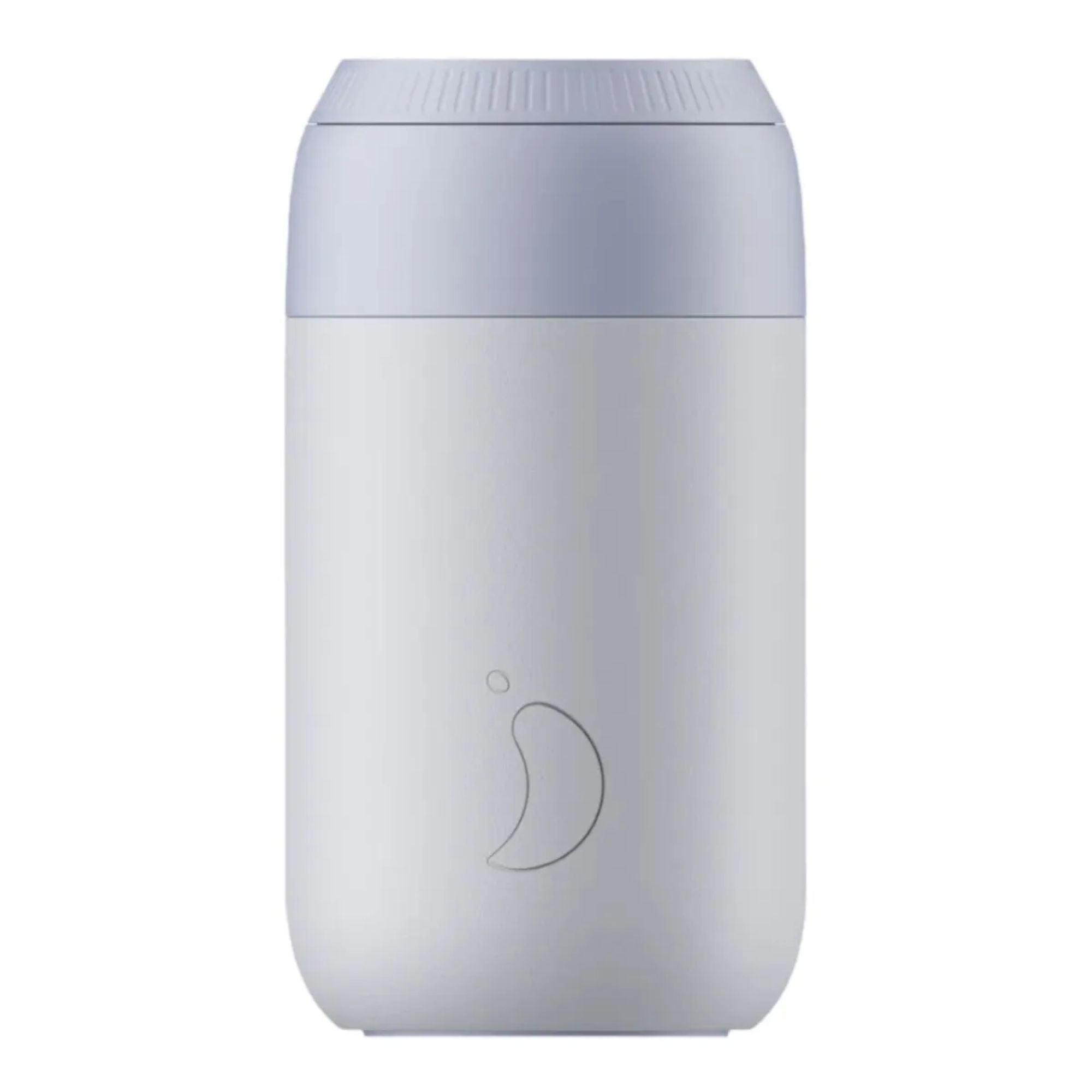
Just like the Picopresso, this is compact without compromise. The sleek design is available in a range of colors and there are plenty of leak-proof features. The only thing you can't do is stick this in the dishwasher.
FAQs
Is the Aeropress a good portable coffee maker?
The Aeropress is a great portable option, but the operative word in the question is 'coffee'. The Aeropress won't make an espresso, because the brewing method uses infusion rather than pressure. The coffee won't be thick and rich, it'll be weaker and less intense than a shot. That's why it's not featured here. Whilst it's a good portable coffee maker, it's not an espresso maker.
Can I make good coffee in a portable espresso maker?
Some of the best espresso shots I've brewed have been in portable and manual espresso makers. The key to any good coffee is finding good beans, grinding them finely in a good grinder (there are plenty of recommendations in our coffee grinders buying guide), and drinking your coffee as close to grinding as possible. It's really that simple.
Do moka pots count as portable espresso machines?
Even though moka pots are also known as stovetop espresso machines, the brewing process isn't how you make a traditional espresso. They'll make a delicious, rich, and intense coffee, but will only reach one or two bars of pressure. To put it in context, the Picopresso generates 18 bars.
How we tested these portable espresso makers
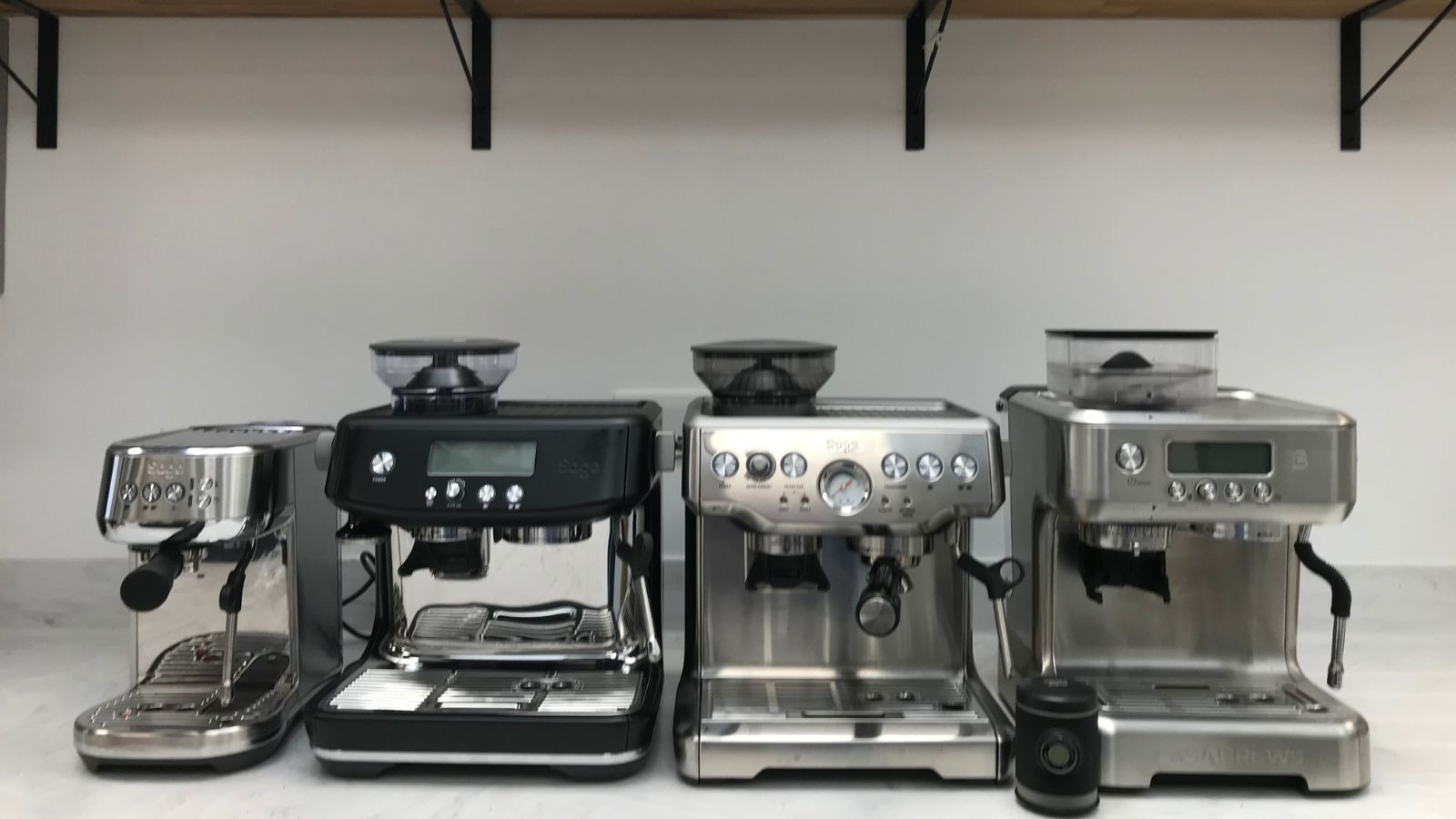
At Homes & Gardens, we take our tests incredibly seriously. They're how we let you know what a product is really like to use.
We have a team of experts who are self-confessed coffee obsessives. They're always researching the latest and greatest models on the market. Once they've found one which they think you'll like, they will call it in to our dedicated test kitchen.
When the espresso maker arrives in our test kitchen, the team has a series of standardized tests and observations which we need to make. We do this for every coffee maker that we test, so that we can make easy comparisons between products and so that you always have a benchmark for what to expect.
Our first test is on, unsurprisingly, single shot espressos. Our experts use the same, finely ground coffee and scoop 18 grams into a double-walled basket. We tamp it and add 1.7 oz of hot water to our grounds. We will measure how much coffee we make (hopefully close to 1.5 oz) and make notes about the appearance, taste, and texture of the shots which we produce.
Normally, we would also test Americano and cappuccino functions, but that doesn't apply for dedicated espresso makers. We just keep testing espressos, making at least five, to ensure a machine is consistent with the first result we found. Using it multiple times will also help us to pick up on any quirks or unusual features that an espresso maker might have.
Once we've finished with the practical tests, we'll also think about aesthetics and the logistics of how an espresso maker would sit in a range of homes. We'll also make notes on washing up and any maintenance that you might need to undertake. In short, we want to make sure that you don't have any unwelcome surprises if you choose to buy based on our recommendations.
To find out more, you can visit our dedicated page for how we test coffee makers.
Design expertise in your inbox – from inspiring decorating ideas and beautiful celebrity homes to practical gardening advice and shopping round-ups.

Laura is our eCommerce editor. As a fully qualified barista, she's our expert in all things coffee and has tested over thirty of the best coffee makers on the market. She has also interviewed Q-Graders and world-leading experts in the coffee industry, so has an intimate knowledge of all things coffee. Before joining Homes & Gardens, she studied English at Oxford University. Whilst studying, she trained as a master perfumer and worked in the luxury fragrance industry for five years. Her collection of home fragrance is extensive and she's met and interviewed five of the world's finest perfumers (also known as 'noses'). As a result of this expansive fragrance knowledge, she always puts quality and style over quantity and fads. Laura looks for products which have been designed simply and with thoughtful finishes.